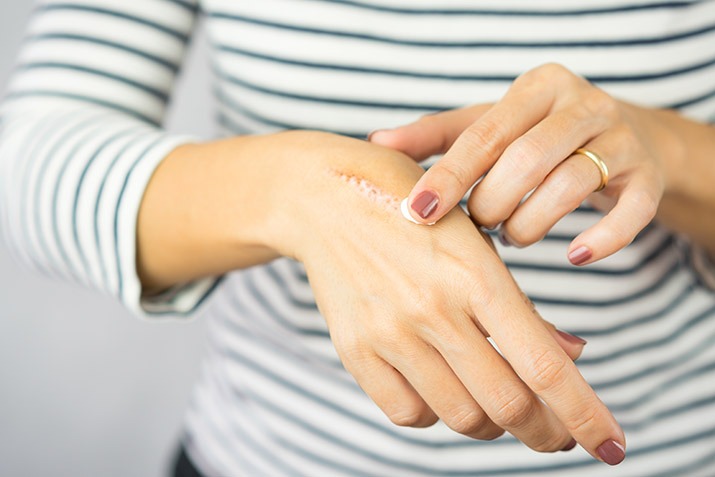It can be stressful to wait for a wound to heal, especially when it might look nasty at times and feel worse. All while wondering, when will it finally heal?
The length of time is dependent upon the size and depth of the wound. With that in mind, Essex Center for Rehabilitation and Nursing would like to familiarize you with the three stages of wound healing, so you might be able to determine how the healing of your wound is progressing.
- Inflammation
Inflammation is the body’s natural response to an injury. Blood vessels dilate to allow white blood cells, antibodies, and other nutrients to the area where the trauma occurred in order to begin the healing process and try to naturally prevent infection.
Symptoms you will recognize as part of inflammation are swelling, redness, heat, and the area being tender to the touch.
- Proliferation
The wound rebuilds itself with a material called granulation tissue during the proliferation phase of wound healing. The granulation tissue allows for new blood vessels to be formed.
Keep an eye on the color of your wound during this phase. If the new tissue is red or pink, that indicates the healing process is going well. A darker color means that there could be an infection present or your wound isn’t getting enough blood delivered to the area.
- Maturation
Depending on the severity of the wound, this stage can take up to six months or even a year after the initial injury. Collagen increases and allows the tissue to contract to complete the healing process. Scarring is caused by excessive collagen production.
Remember that even when a wound appears fully healed, that new skin is around 20 percent weaker than it initially was. And at any sign of infection, seek professional care; an infected wound will not get better on its own.
To learn more about Essex Center for Rehabilitation and Nursing and all of the services they offer, visit http://essex-center.facilities.centershealthcare.org.







